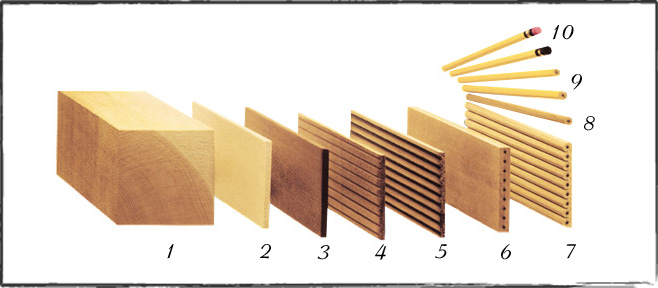You probably don’t give much thought to No. 2 pencils. After all, note-taking apps and screenshots have practically replaced their functionality. And even before there was a smartphone in every pocket, pencils were merely the thing you used to do math problems or jot down phone numbers. Not great fodder for contemplation.
But pencils are more instructive than you think. Not only do they serve a simple (albeit increasingly insignificant) function, pencils also symbolize the complex process that goes into any great product. For our purposes today, that product is a marketing optimization strategy.

When you look at a pencil, you see a ridged wooden tool, painted yellow and topped with a pink eraser. But you don’t see the tree from which the pencil was made being logged, that log cut into smaller slabs, the slabs being carved into pencils. Nor do you see the graphite holes being bored and filled, the rubber erasers being shaped and fitted, or that trademark No. 2 being etched onto the final product. As the end user, you shouldn’t witness that process. The mark of a truly great product is that users get to enjoy it without ever seeing what’s under the hood.
Marketing optimization strategies are like No. 2 pencils in that way. Customers are so blown away by the brilliance of the message that they never wonder how those words came to be in front of them. But behind the scenes, numerous people and processes come together to bring those campaigns to life.
In this post, we break down the multi-faceted marketing optimization process and why each component is necessary.

1. Technology and Infrastructure
Each department in your company needs an organizational system. Everyone involved should understand their jobs, and you should have flexible, responsive technology to help you document and track their progress. This includes content management systems, web development programs, and analytics software that help you improve SEO and tweak your sales funnel.
Equip each department with the right technology and resources, and check in frequently to find out what needs adjusting. No single person whittles each No. 2 pencil, and the same goes for marketing. Many minds collaborate on the end product, and each person demands certain resources to do their jobs.
2. Customer Experience
Before you write your first piece of content or schedule a Facebook post, you must know your desired customer experience. What does the tone of your writing tell customers about your company? What emotions does this campaign inspire? Are they compelled to buy from you, and is there a clear, intuitive process for them to follow?
It’s important that you consider how your message lands for consumers before you launch a campaign. When Bic marketed its Cristal For Her pens to women in 2012, its desired audience widely criticized the product, insulted by the suggestion that women want or need different pens than men. However well-intentioned the product line, Bic misstepped in a very public way.
Think through your desired customer experience, from first contact to your ongoing, post-purchase correspondence. Then, align each element of your strategy with that goal. You want marketing and sales working together in a perfectly choreographed dance, guiding customers through the sales funnel.
3. Customer Insights and Optimization
You can’t optimize if you don’t know what’s working and what’s a flop. Regularly track your metrics on different channels to see where customers are responding well. Then you can invest more resources there or adapt the successful strategies to channels that aren’t getting such positive results. Respond to what customers like, and make it easy for them to buy from you.
Use the data you collect to create more effective email campaigns, which help bring past customers back to your store or at least help you stay top of mind when they’re not ready to make a purchase. Always deliver on your promised customer experience.
Pencils are built from many moving parts and so are marketing optimization strategies. When you apply a process-driven mindset that coordinates each component effectively, the end product becomes stronger and more polished – and that will resonate with your customers.



